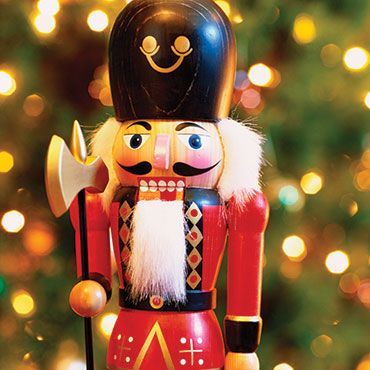What do you think?
Rate this book


208 pages, Hardcover
First published January 1, 1816
The father then removed him cautiously from the table and, raising the wooden cape aloft, the manikin opened his mouth wide, wide, and showed two rows of very sharp, very tiny white teeth. When told to do so, Marie inserted a nut and – Crack! Crack! – he chewed up the nut, so that the shell dropped away, and the sweet kernel itself ended up in Marie’s hand.
Right at her feet, as if driven by subterranean force, the ground spurted out sand and lime and crumbling wall stones, and seven mouse heads with seven brightly sparkling crowns loomed high from the ground, hissing and whistling quite unbearably.
Soon the mouse body, to whose neck the seven heads were attached, likewise worked its way out completely, and the large mouse, adorned with seven diadems, exulted in its full chorus.
No sooner had they walked a few paces than they reached the great marketplace, which offered the most thrilling view. The surrounding houses were shuttered by sweets, gallery was piled on gallery; and at the middle there stood a high, frosted layer cake as the obelisk. All about it, four very artful fountains spewed orgeat, lemonade, and other superb sweet drinks aloft. And the basin filled up with cream, which could have been spooned out right away.









“Kết hợp hài hòa những trải nghiệm của đời sống thường nhật với thế giới cổ tích ma quái, xóa bỏ mọi ranh giới giữa Hiện thực và Tưởng tượng, đối với Hoffmann là trò chơi tự do văn chương, là thủ pháp nghệ thuật làm sáng tỏ những sức mạnh phi lý mà trí tuệ không thể thấu hiểu và lý giải.”